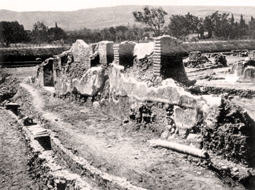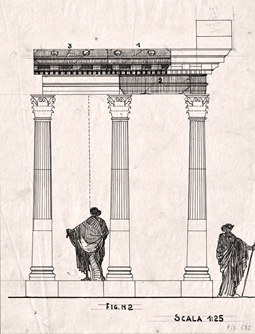download article as pdf: La rete idrica della Kos di età romana: persistenze e modificazioni rispetto alla città ellenistica
.
In the town of Kos, the excavations carried out by the Italian archaeologists between 1912 and 1945 and the new investigations by the Greek Archaeological Service have revealed a complex system of water supply based on the integration, occurred during the Roman period, of a water network already set up since the foundation of the city, that took place in 366 BC on the basis of an urban Hippodamian scheme; this defined also a urban drainage system for the disposal of stormwater designed together with the road network. The water supply could rely on abundant natural springs located in the hills south-east of the city, supplemented by private wells and cisterns. The water usage involved public fountains and nymphaea, and, especially in Roman times, several bath buildings, whose first installation dates in a period between I and II cent. AD, with later changes until the mid-fourth century, when some of them changed their function and were transformed in religious buildings. To fed the thermae, an aqueduct was built in imperial period, although the baths were always equipped with storage tanks to compensate any reduction of the flow; to rationalize the use of water, the discharge of the thermal baths was conducted through pipes to flush the sewers of public latrines, always built nearby, while the houses were equipped with private sanitary facilities whose sewers used the drainage channels in the middle of the streets, later reworkings of the original channels of the first Hellenistic age. In conclusion, the water supply systems and wastewater disposal witness the remarkable persistence of the original Kos town water systems and above all attest to how the study of water management systems of a city may improve knowledge of its topography at the different stages of development.


